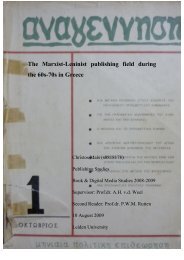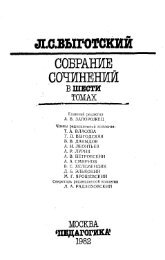Create successful ePaper yourself
Turn your PDF publications into a flip-book with our unique Google optimized e-Paper software.
the restriction of the nobility's old freedom<br />
to appropriate all the loot and to starve the<br />
rest of the population.<br />
MARCH, 1525<br />
It was in March that fifteen hundred<br />
years later, in 1525, the German peasants,<br />
under the leadership of the Christian Communist<br />
Thomas Miinzer, formulated their<br />
famous "Twelve Points" in which they demanded<br />
the abolition of serfdom. Their revolt<br />
was crushed with real German thoroughness.<br />
The German peasant is a free and<br />
well-to-do citizen now, and a vicious enemy<br />
of the working class at that . . .<br />
MARCH, 1848<br />
It was in March, 1848, following the lead<br />
of the February Revolution of Paris, that<br />
the dissatisfied middle classes in practically<br />
every country in Europe, led by the students<br />
and supported by the workers, rose against<br />
the absolutist system maintained in the interest<br />
of a small clique of noblemen, financiers<br />
and clergymen. Victorious in the beginning,<br />
the cause of bourgeois democracy<br />
was checkmated later by the more fortunate<br />
Kornilovs of their time. But it finally<br />
triumphed with the development of capitalism,<br />
and now the very same students, the<br />
grandsons of the fighters of 1848, are the<br />
advance guard of bourgeois oppression in<br />
its struggle against the rising working class.<br />
MARCH, 1871<br />
It was in the same month twenty-three<br />
years later that the workers and the pettybourgeoisie<br />
of the French capital rose after<br />
a lost war with P<strong>russia</strong> and proclaimed the<br />
Commune of Paris. A mixture of proletarian<br />
socialism and petty-bourgeois patriotism,<br />
torn by the various cross-currents of socialist<br />
and near-socialist thought, it was—aside<br />
from the Paris June insurrection of 1848—<br />
(Concluded on Pagif 52)<br />
Above—"The Captives," by Kathe Kollwitz, based<br />
on the frustration of the Peasants' Revolt in<br />
1525.<br />
Below—"A March Day," by Max Klinger, based<br />
on the revolution of March, 1848, in Berlin.<br />
March: The Month of Revolutions<br />
AMONG all the upheavals in history<br />
the November revolution occupies<br />
a place apart. It was the first successful<br />
rebellion in which the underdog was not<br />
merely used as cannon-fodder in the<br />
struggle of contending factions of the<br />
master classes. And as if to mark this<br />
distinction it even broke with the timehonored<br />
tradition of the revolutionary<br />
calendar. It discarded the month of<br />
March, which in this respect seemed to<br />
hold a privileged place among the other<br />
months of the year.<br />
MARCH, 44 B. C.<br />
It was in the month of March, 44 B. C.<br />
that Brutus and Cassius with the killing<br />
of Caesar started what is commonly called<br />
a losing fight for republican freedom<br />
against monarchist tyranny. Caesar has<br />
been dead for nearly two thousand years,<br />
but the impressive legend still inspires one<br />
generation of high-school boys after another.<br />
For the legend is more.beautiful than<br />
the historical fact. - The republican heroes<br />
were only the spokesmen of the aristocratic<br />
slaveholders. These resented Caesar's<br />
attempts to consolidate his own power by<br />
easing the lot of the popular masses through<br />
March, 1923 SOVIET RUSSIA PICTORIAL 43















![tyf Enf=O=n]lgg](https://img.yumpu.com/47584932/1/190x245/tyf-enfonlgg.jpg?quality=85)

